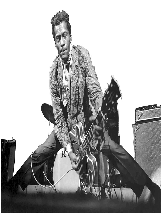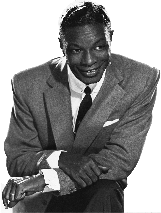The Evolution Of Music Part-IX
The Evolution Of Music Part-IX
 Rhythm and blues, often abbreviated to R&B, is a genre of popular African American music that originated in the 1940s. The term was originally used by record companies to describe recordings marketed predominantly to urban African Americans, at a time when “urbane, rocking, jazz based music with a heavy, insistent beat” was becoming more popular.
The term has subsequently had a number of shifts in meaning. In the early 1950s and beyond, the term rhythm and blues was frequently applied
to blues records. Starting in the 1960s, after this style of music contributed to the development of rock and roll, the term “R&B” became used to refer to music styles that developed from and incorporated electric blues, as well as gospel and soul music. By the 1970s, rhythm and blues was used as a blanket term for soul and funk. In the 1980s, a newer style of R&B developed, becoming known as contemporary R&B. History
Rhythm and blues, often abbreviated to R&B, is a genre of popular African American music that originated in the 1940s. The term was originally used by record companies to describe recordings marketed predominantly to urban African Americans, at a time when “urbane, rocking, jazz based music with a heavy, insistent beat” was becoming more popular.
The term has subsequently had a number of shifts in meaning. In the early 1950s and beyond, the term rhythm and blues was frequently applied
to blues records. Starting in the 1960s, after this style of music contributed to the development of rock and roll, the term “R&B” became used to refer to music styles that developed from and incorporated electric blues, as well as gospel and soul music. By the 1970s, rhythm and blues was used as a blanket term for soul and funk. In the 1980s, a newer style of R&B developed, becoming known as contemporary R&B. History
The precursors of rhythm and blues came from jazz and blues, which overlapped in the 1930s through musicians such as Leroy Carr, Cab Calloway, Count Basie, and T-Bone Walker. There was also increasing emphasis on the electric guitar as a lead instrument, as well as the piano and saxophone.
Late 1940s
In 1948, RCA Victor was marketing black music under the name “Blues and Rhythm”. In that year, Louis  Jordan dominated the top five listings of the R&B charts with three songs, and two of the top five songs were based on the boogie-woogie rhythms that had come to prominence during the 1940s. Jordan’s band, the Tympany Five consisted of him on saxophone and vocals, along with musicians on trumpet, tenor saxophone, piano, bass and drums. Jordan’s cool music, along with that of Big Joe Turner, Roy Brown, Billy Wright, and Wynonie Harris, is now also referred to as jump blues.
Jordan dominated the top five listings of the R&B charts with three songs, and two of the top five songs were based on the boogie-woogie rhythms that had come to prominence during the 1940s. Jordan’s band, the Tympany Five consisted of him on saxophone and vocals, along with musicians on trumpet, tenor saxophone, piano, bass and drums. Jordan’s cool music, along with that of Big Joe Turner, Roy Brown, Billy Wright, and Wynonie Harris, is now also referred to as jump blues.
In 1949, the term “Rhythm and Blues” replaced the Billboard category Harlem Hit Parade. Also in that year, “The Huckle-Buck”, recorded by band leader and saxophonist Paul Williams, was the #1 R&B tune, remaining on top of the charts for nearly the entire year.
Early to mid 1950s
Working with African American musicians, Greek American Johnny Otis produced many R&B hits in 1951. Otis scored ten top ten hits that year. Also in July 1951, Cleveland, Ohio DJ Alan Freed started a late-night radio show called “The Moondog Rock Roll House Party” on WJW-AM.
In 1951, Little Richard Penniman began recording for RCA Records in the jump blues style of late 1940s Joe Brown and Billy Wright. However, it wasn’t until he prepared a demo in 1954 that caught the attention of Specialty Records that the world would start to hear his new, up tempo, funky rhythm and blues that would catapult him to fame in 1955 and help define the sound of rock ‘n’ roll. A rapid succession of rhythm and blues hits followed which would influence performers such as James Brown, Elvis Presley, and Otis Redding.
Late 1950s
 In 1956, an R&B “Top Stars of ’56" tour took place, with headliners Al Hibbler, Frankie Lymon and the Teenagers, and Carl Perkins. Film makers took advantage of the popularity of “rhythm and blues” musicians as “rock n roll” musicians beginning in 1956. Little Richard, Chuck Berry, Fats Domino, Big Joe Turner, The Treniers, The Platters, The Flamingos, all made it onto the big screen.
In 1956, an R&B “Top Stars of ’56" tour took place, with headliners Al Hibbler, Frankie Lymon and the Teenagers, and Carl Perkins. Film makers took advantage of the popularity of “rhythm and blues” musicians as “rock n roll” musicians beginning in 1956. Little Richard, Chuck Berry, Fats Domino, Big Joe Turner, The Treniers, The Platters, The Flamingos, all made it onto the big screen.
Two Elvis Presley records made the R&B top five in 1957: “Jailhouse Rock”/”Treat Me Nice” at #1, and “All Shook Up” at #5, an unprecedented acceptance of a non-African American artist into a music category known for being created by blacks. Nat King Cole, a former jazz pianist who had had #1 and #2 hits on the pop charts in the early 1950s, had a record in the top 5 in the R&B charts in 1958.
The white bandleader of the Bill Black Combo, Bill Black, who had helped start Elvis Presley’s career, was popular with black listeners. Ninety percent of his record sales were from black people, and his “Smokey, Part 2” (1959) rose to the #1 position on black music charts.
1960s and later
By the early 1960s, the music industry category previously known as rhythm and blues was being called soul music, and similar music by white artists was labeled blue eyed soul. Motown Records had its first million-selling single in 1960 with The Miracles’ “Shop Around”. Stax’s major hit, the Mar-Keys’ instrumental “Last Night” (also released in 1961) introduced the rawer Memphis soul sound that Stax became known for. Also in the 1960s, R&B and soul influenced British blues, mod and beat music bands such as The Animals, The Yardbirds, The Rolling Stones, The Who, The Kinks and The Beatles.
By the 1970s, the term rhythm and blues was being used as a blanket term for soul, funk, and disco. Around the same time, earlier R&B was an influence on British pub rock and later, the mod revival. In the 2000s, the term R&B is almost always used instead of the full rhythm and blues, and mainstream use of the term usually refers to contemporary R&B, which is a modern version of soul and funk-influenced pop music that originated as disco faded from popularity.


